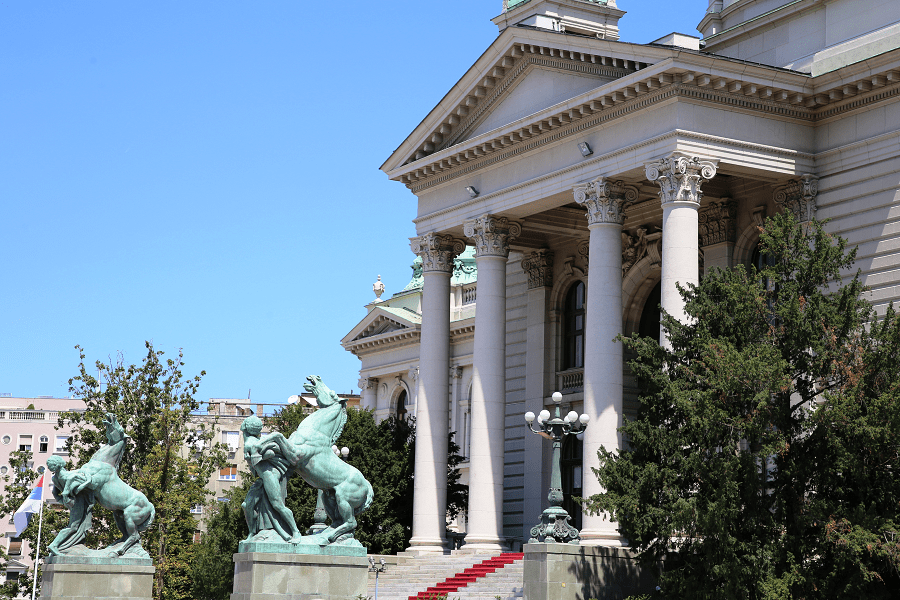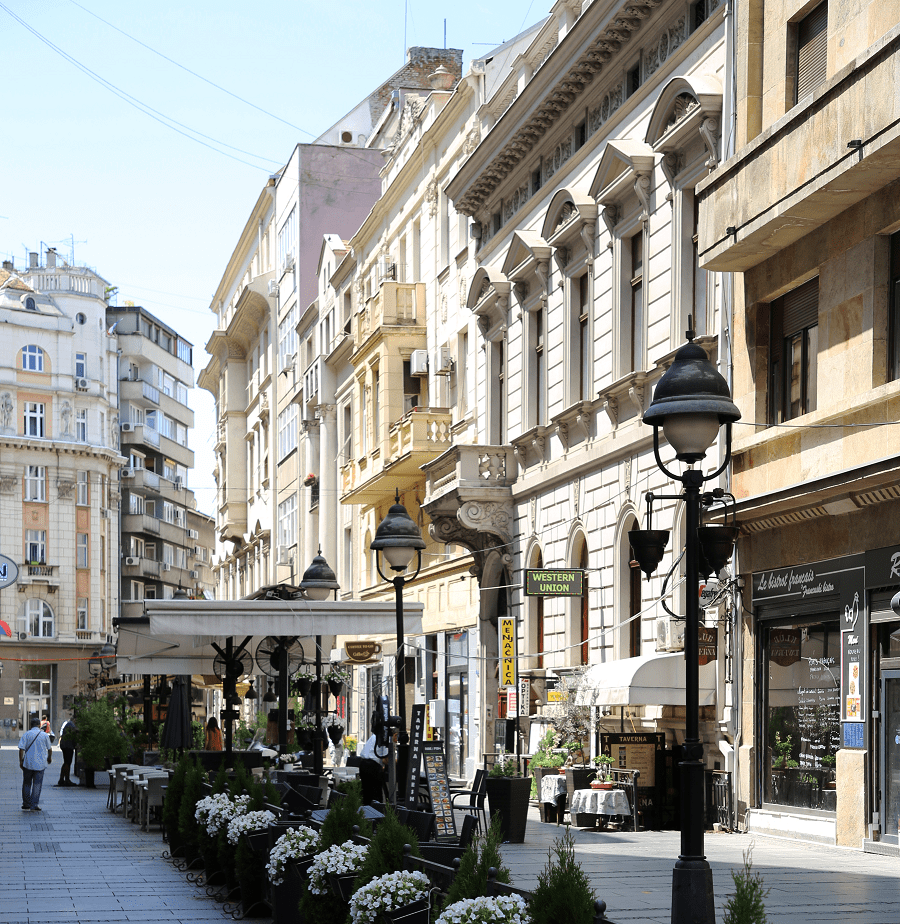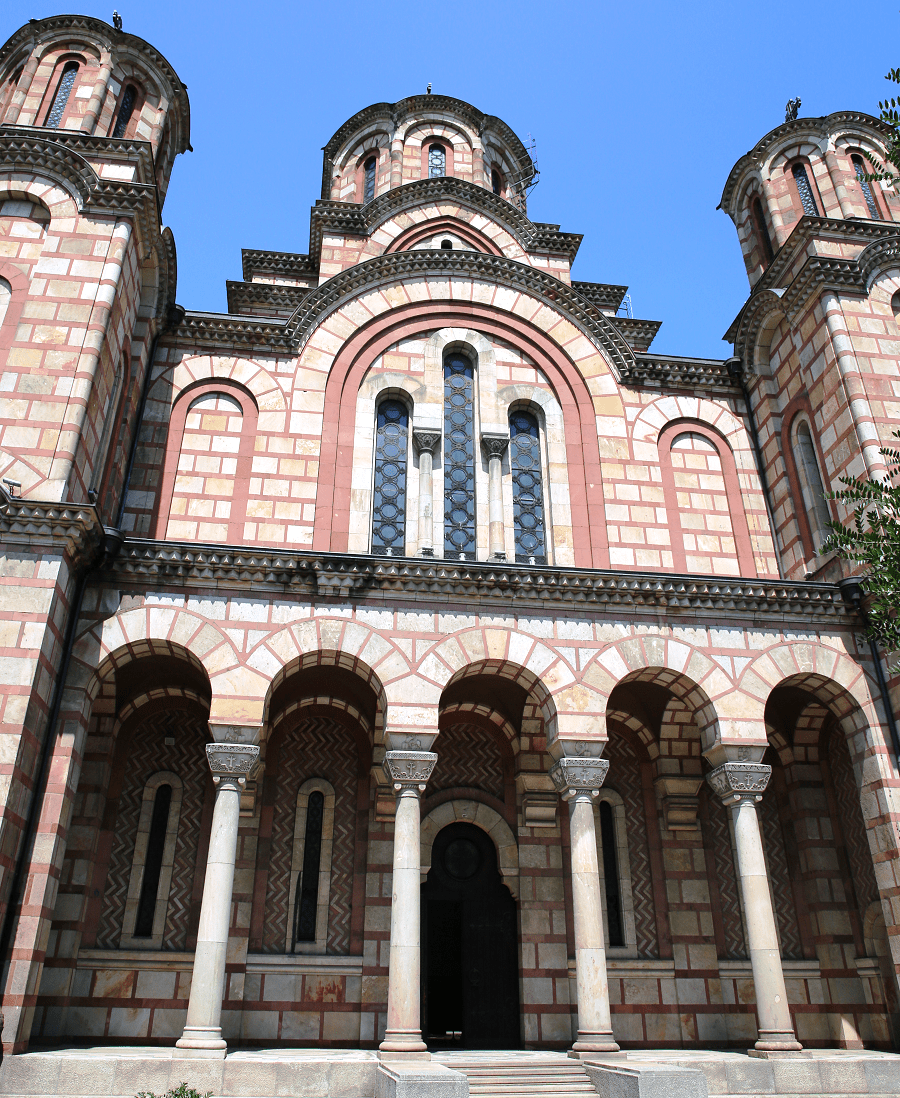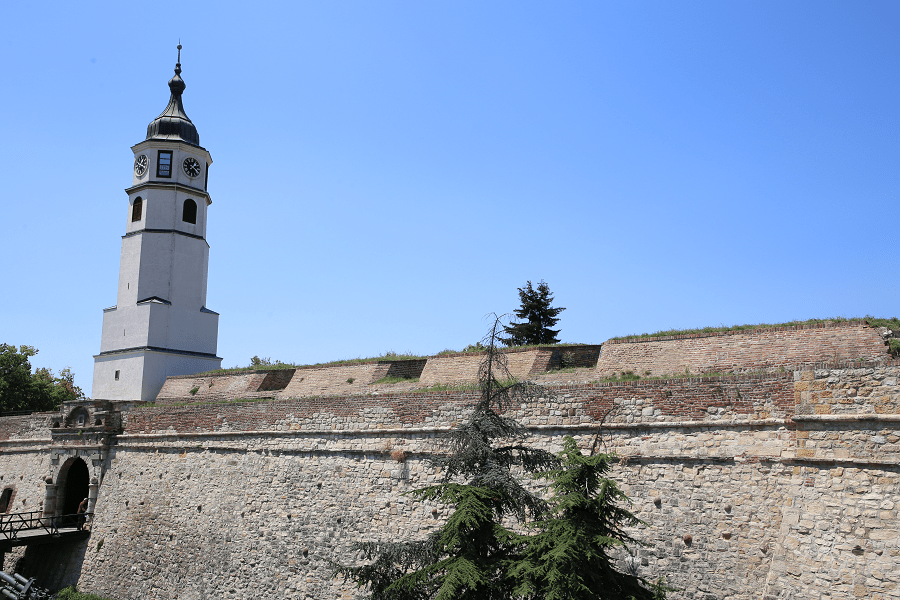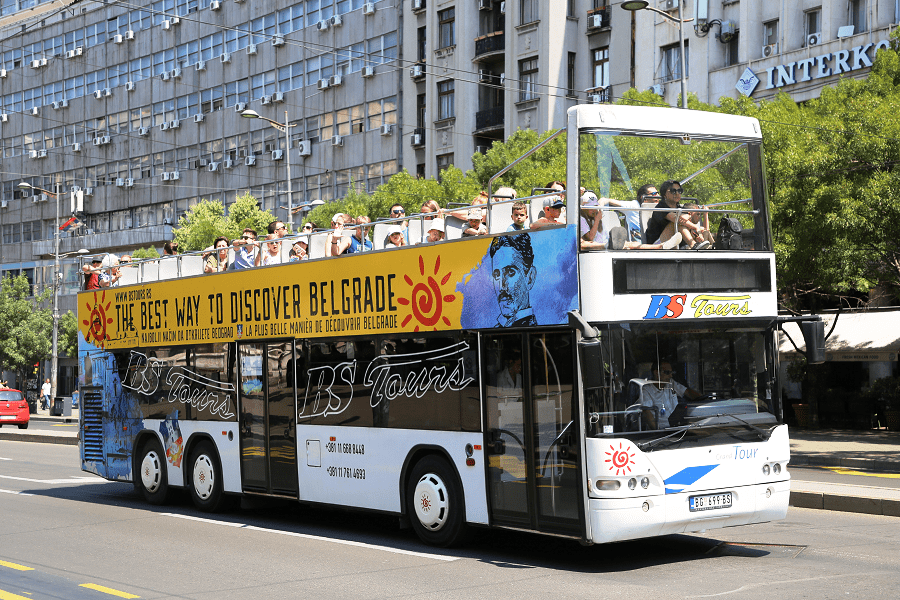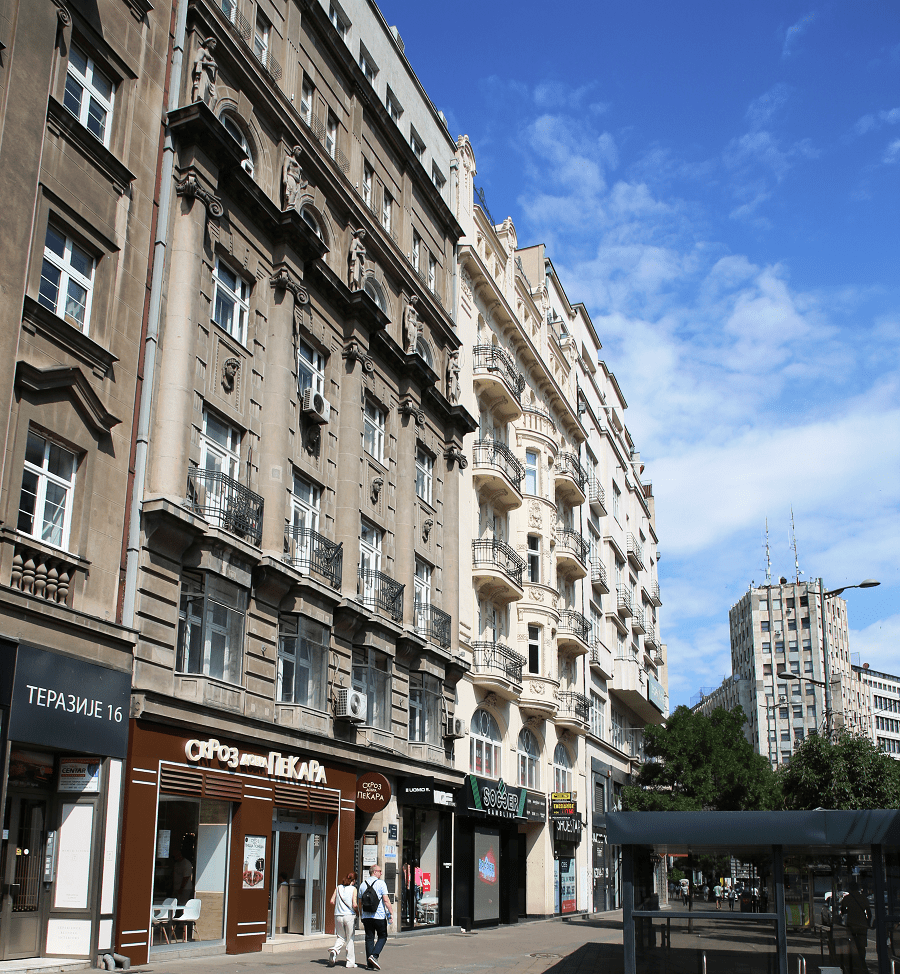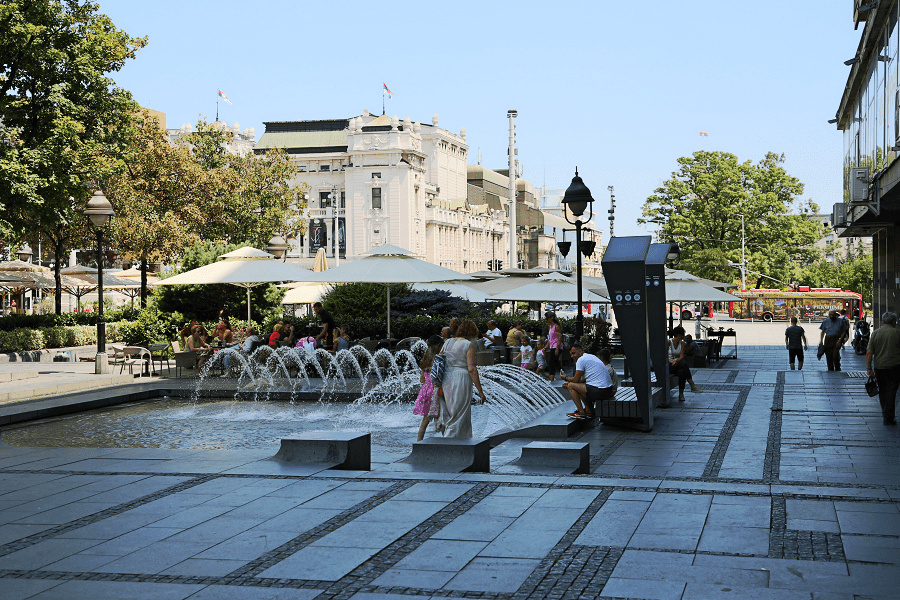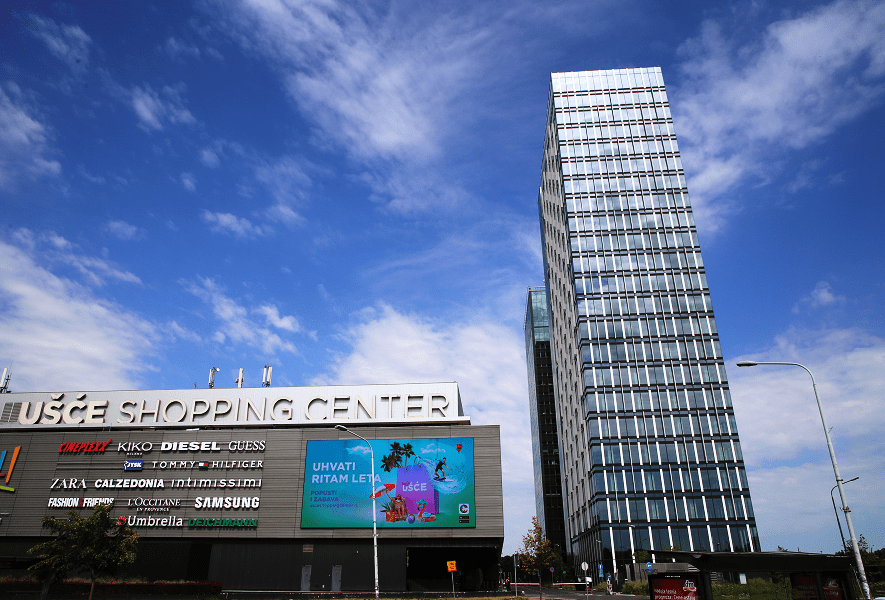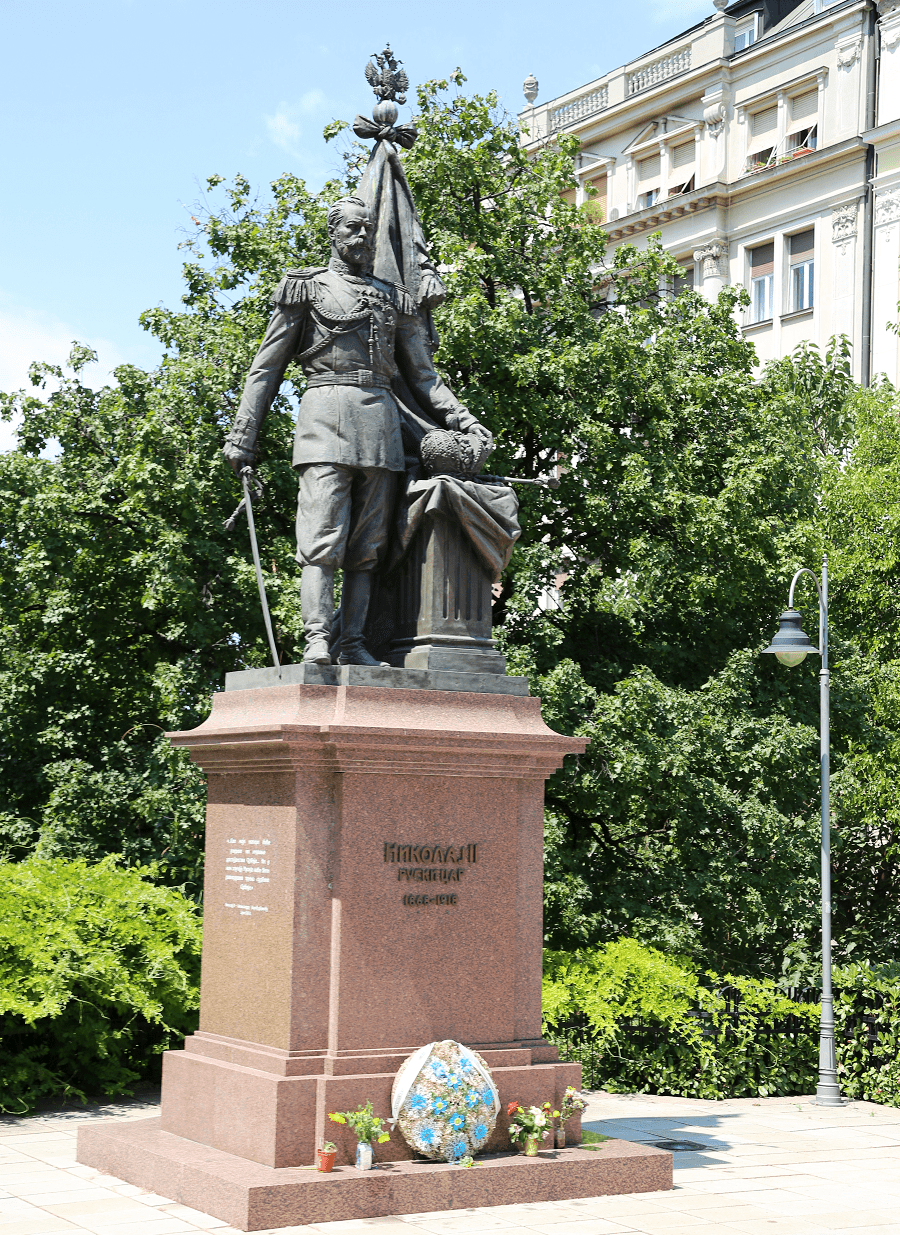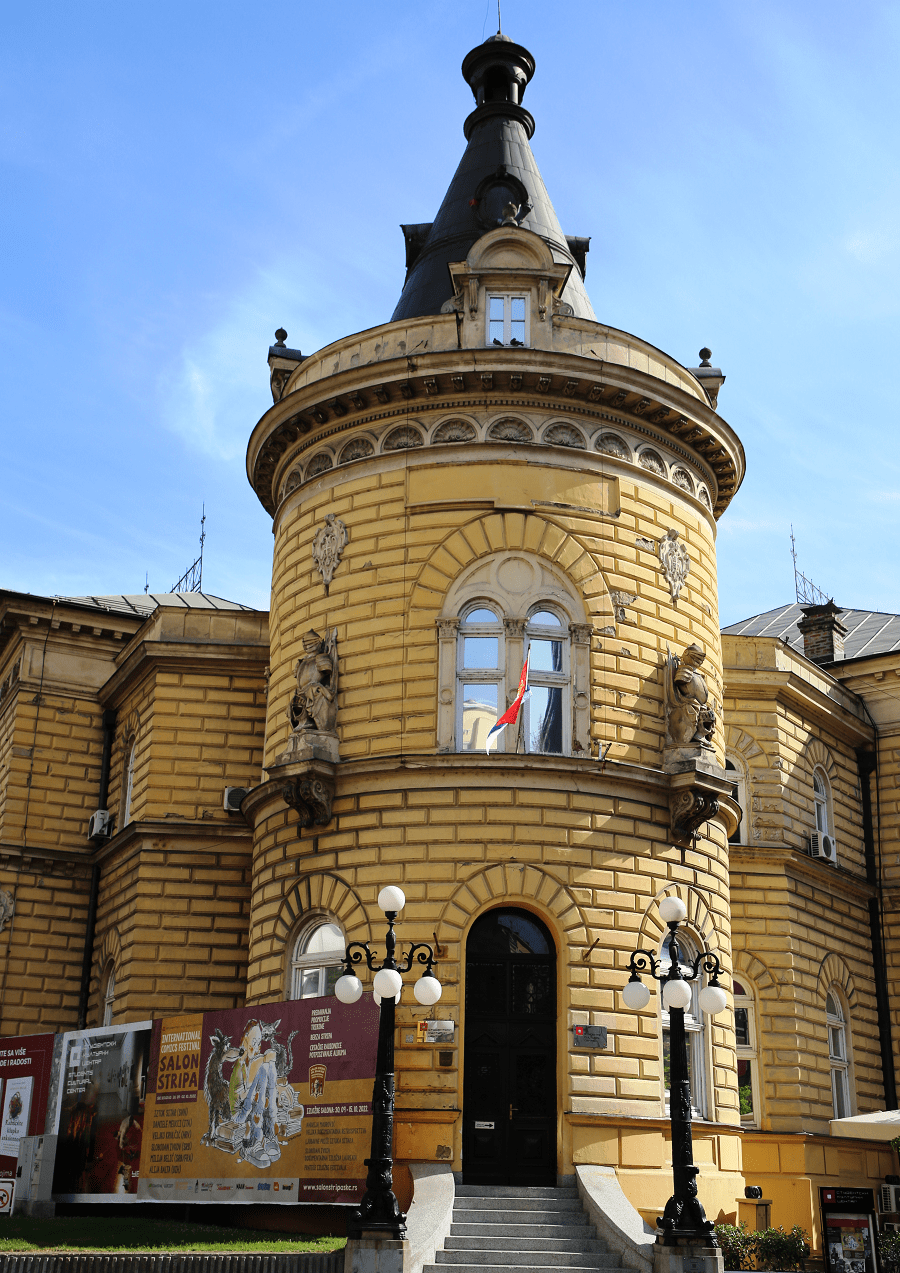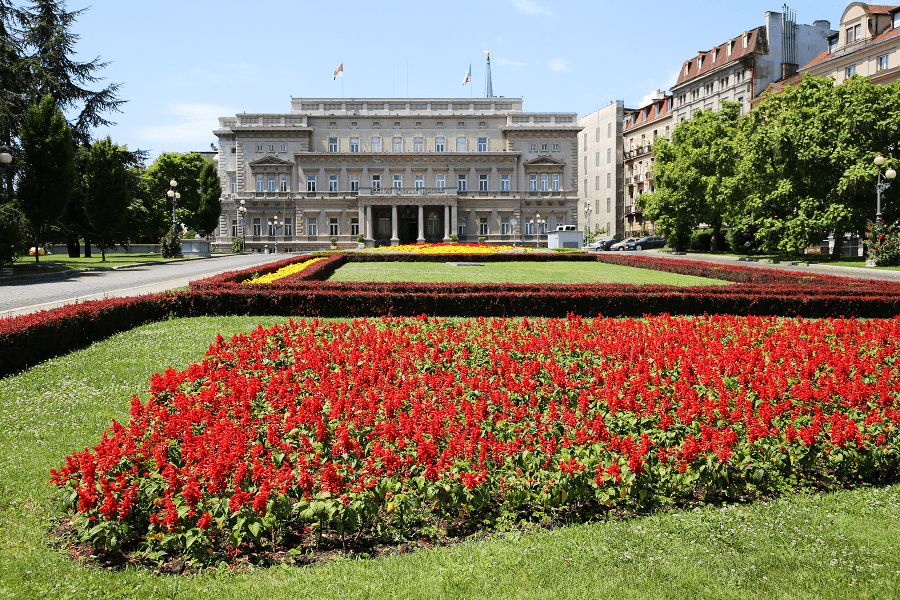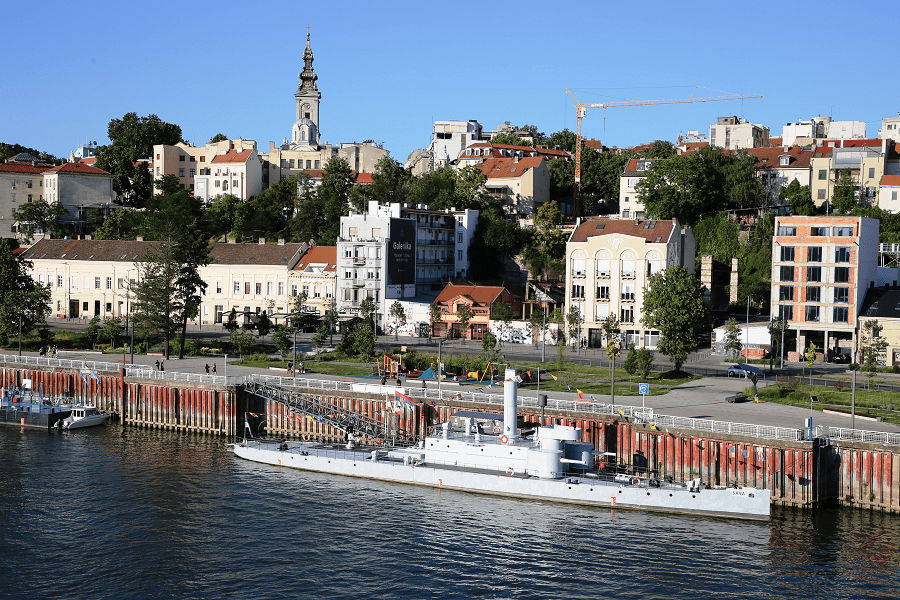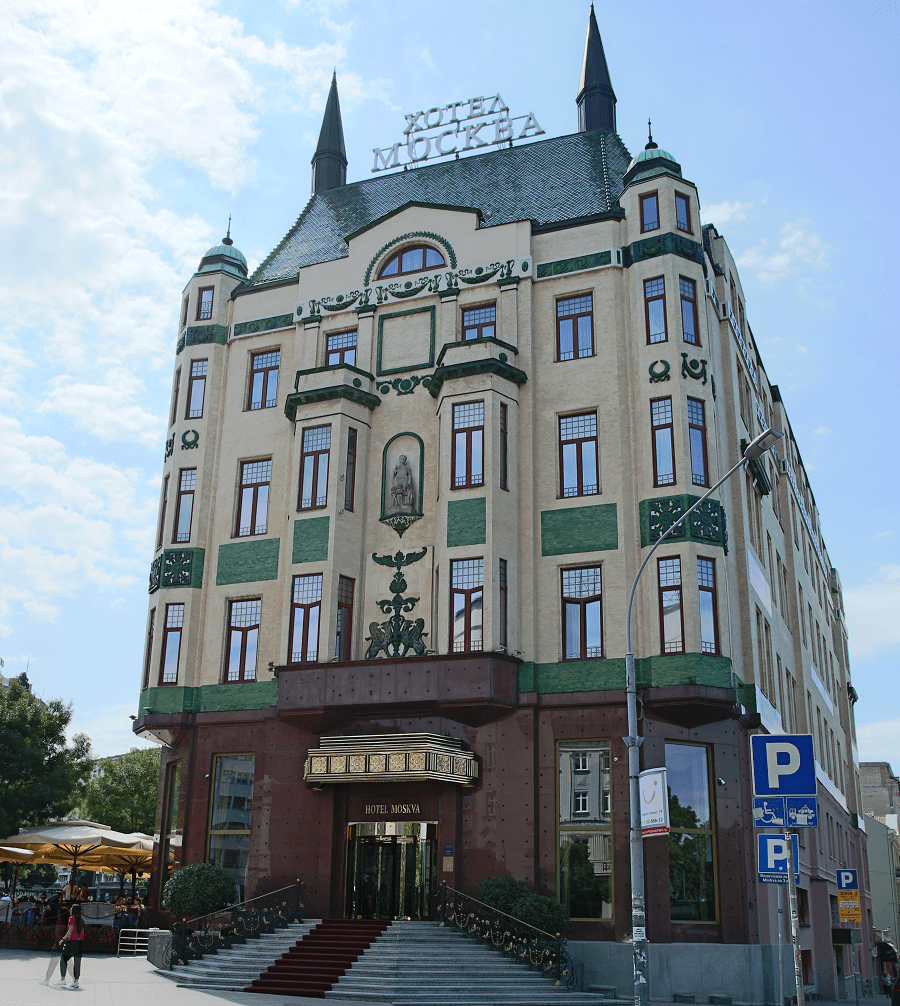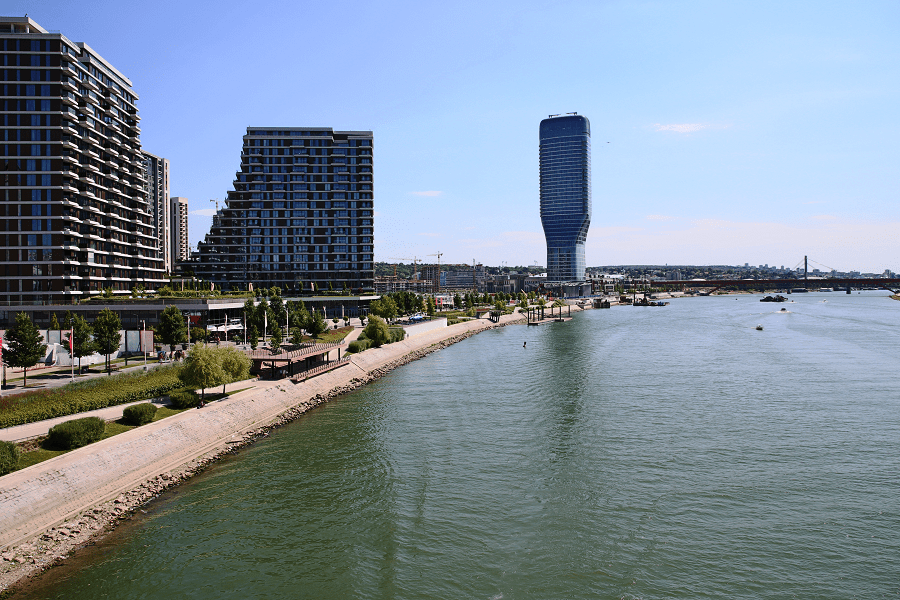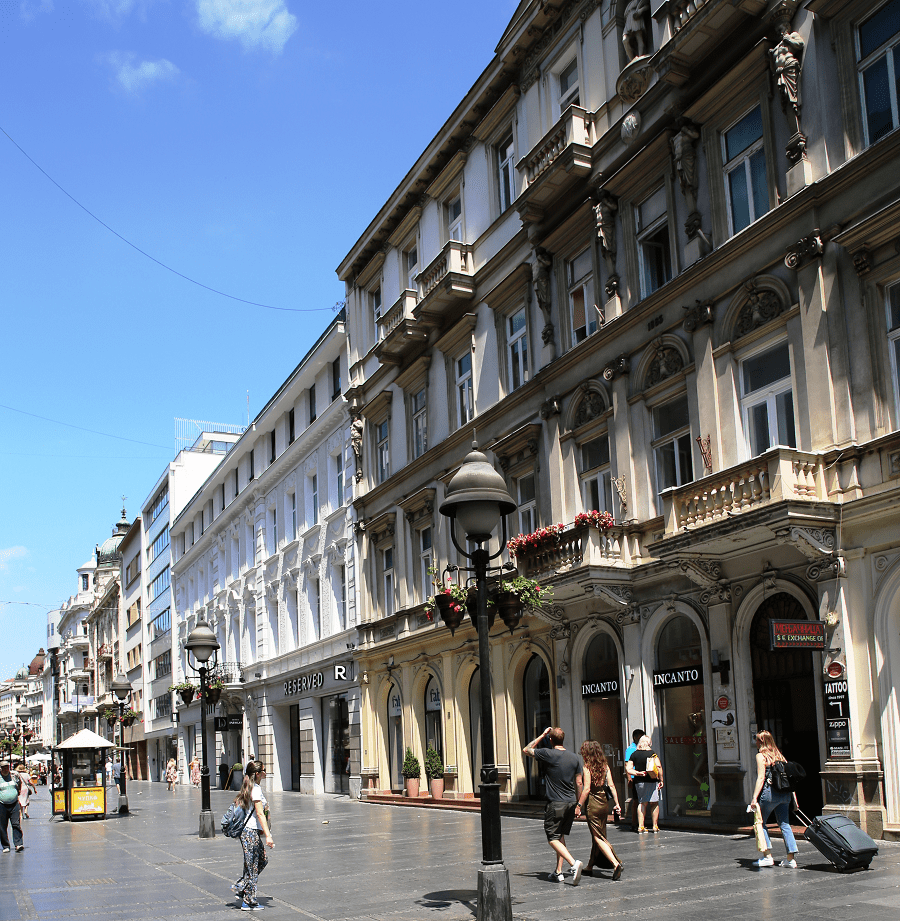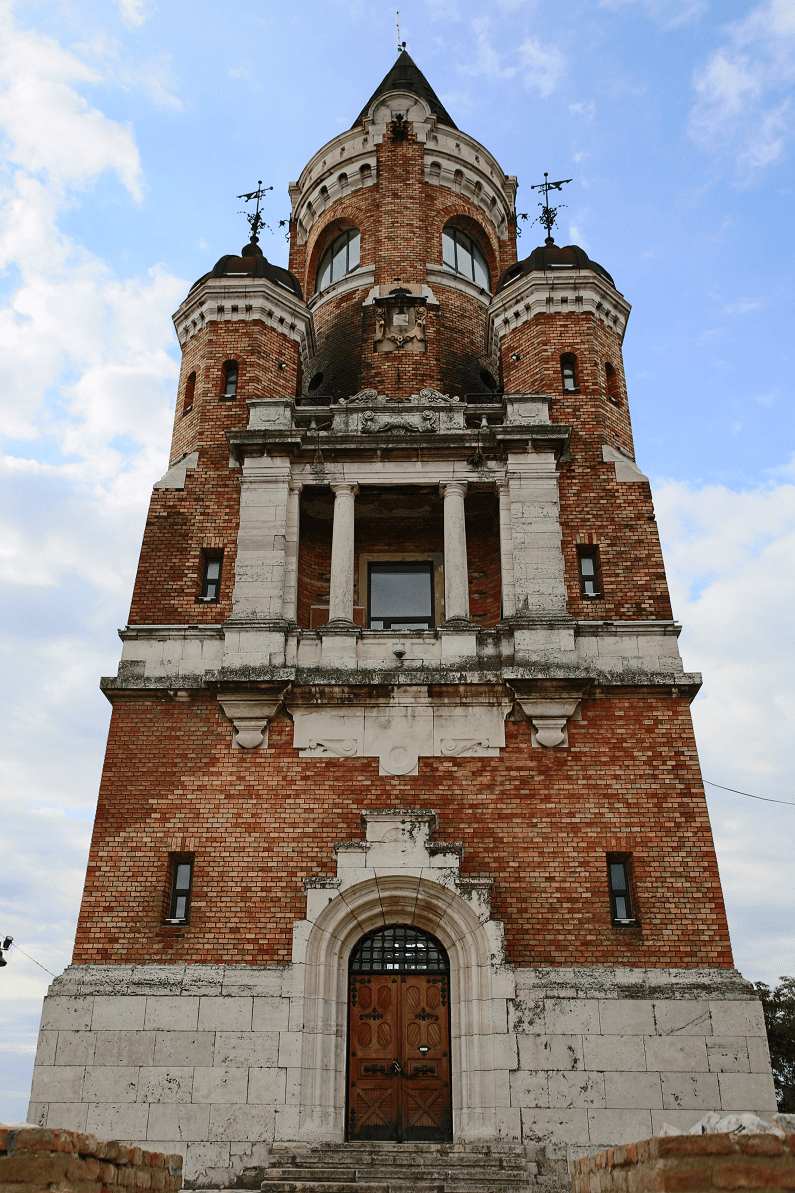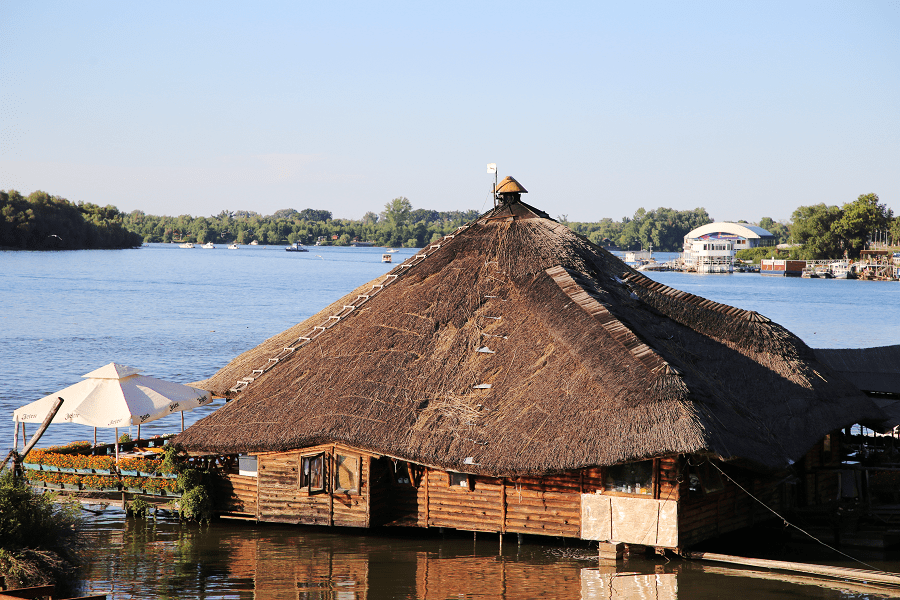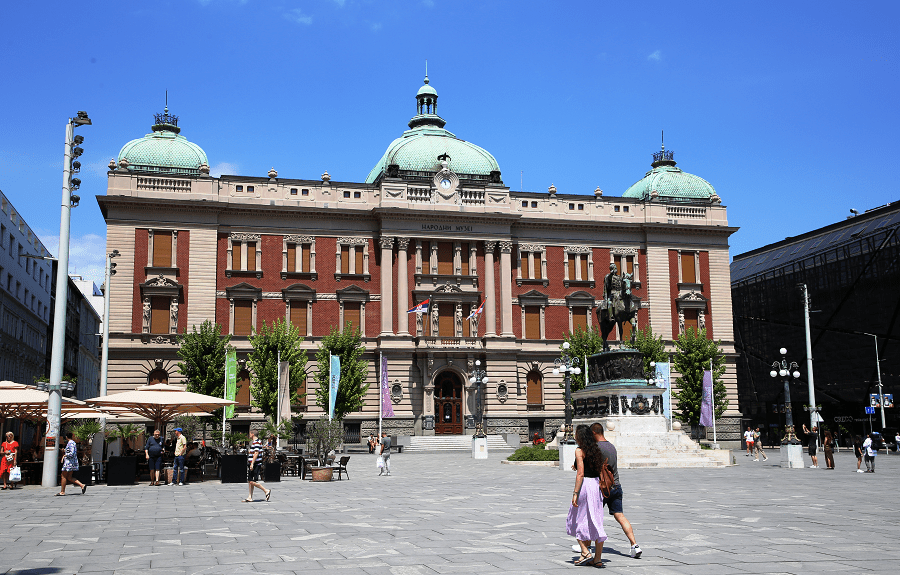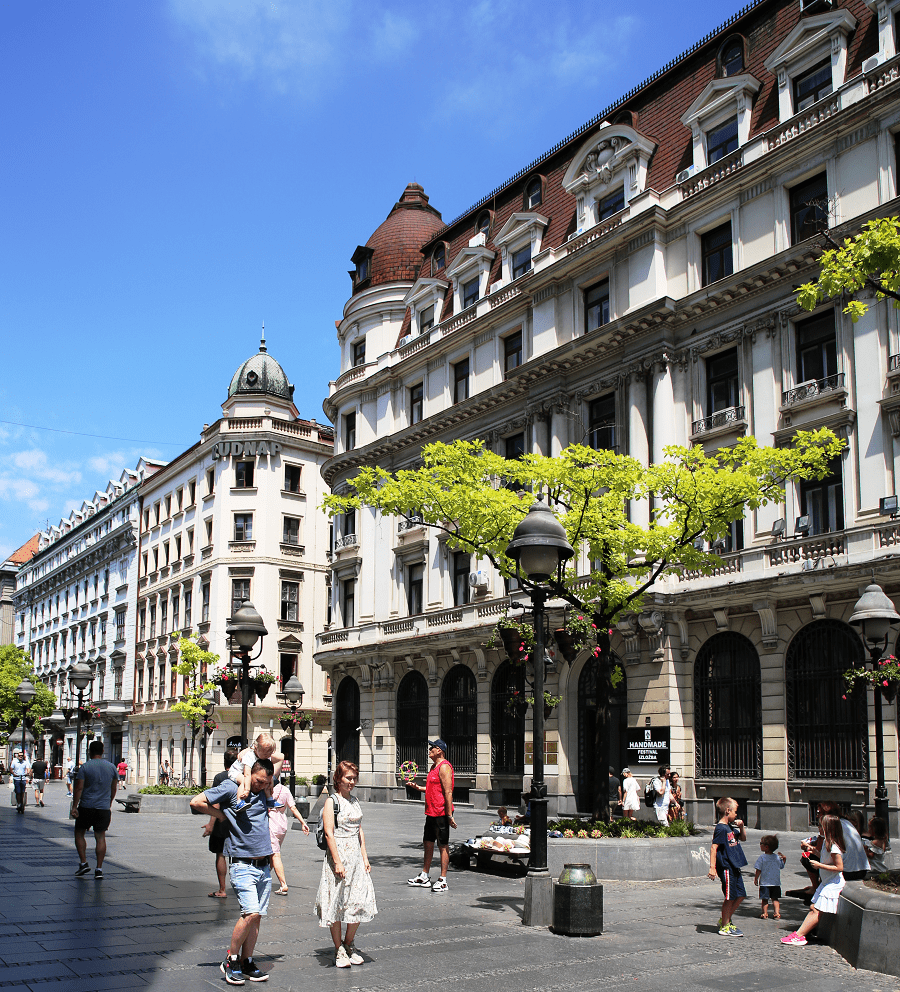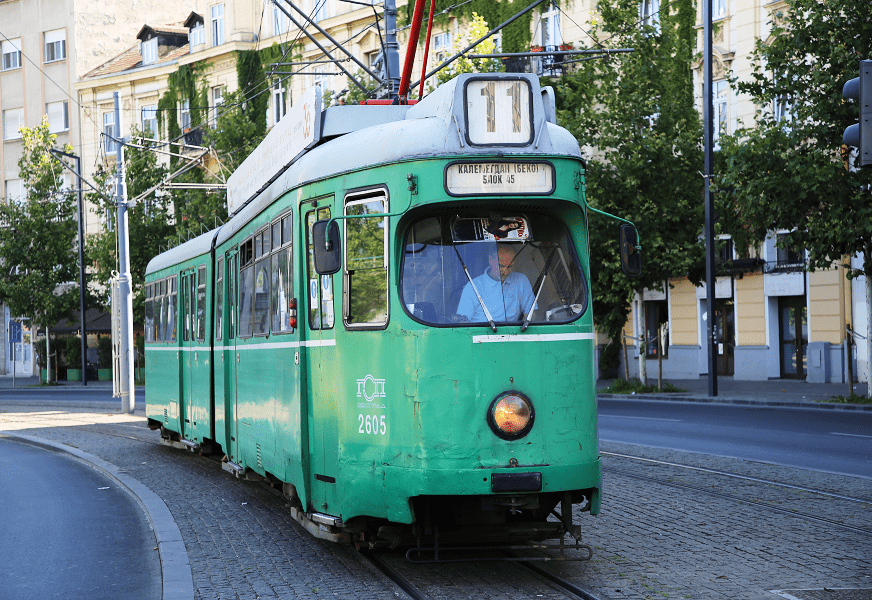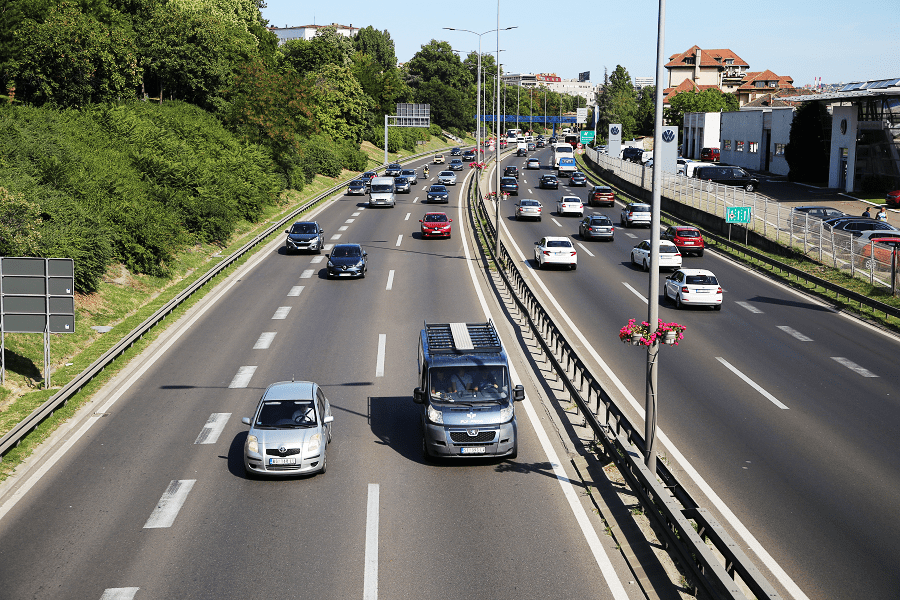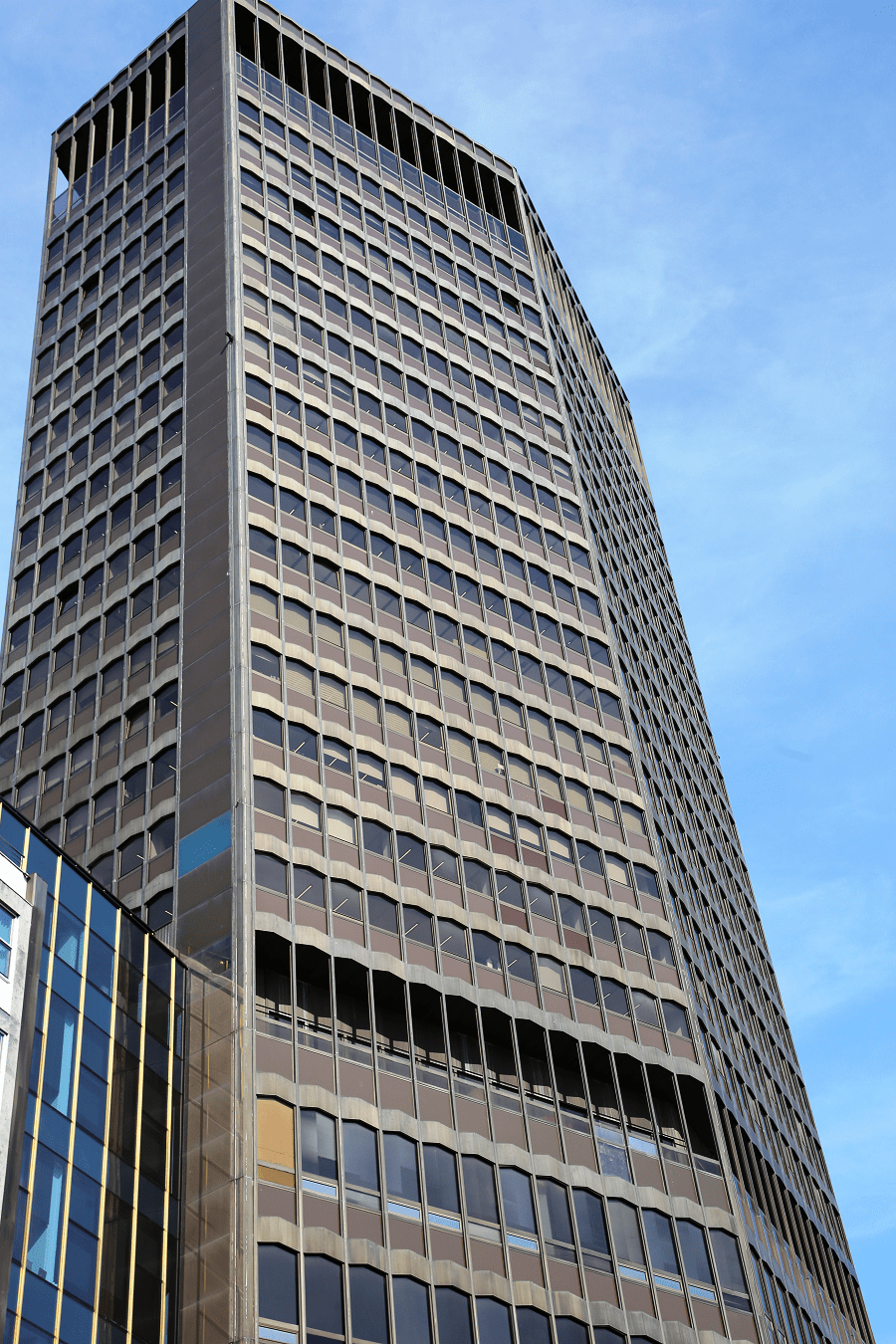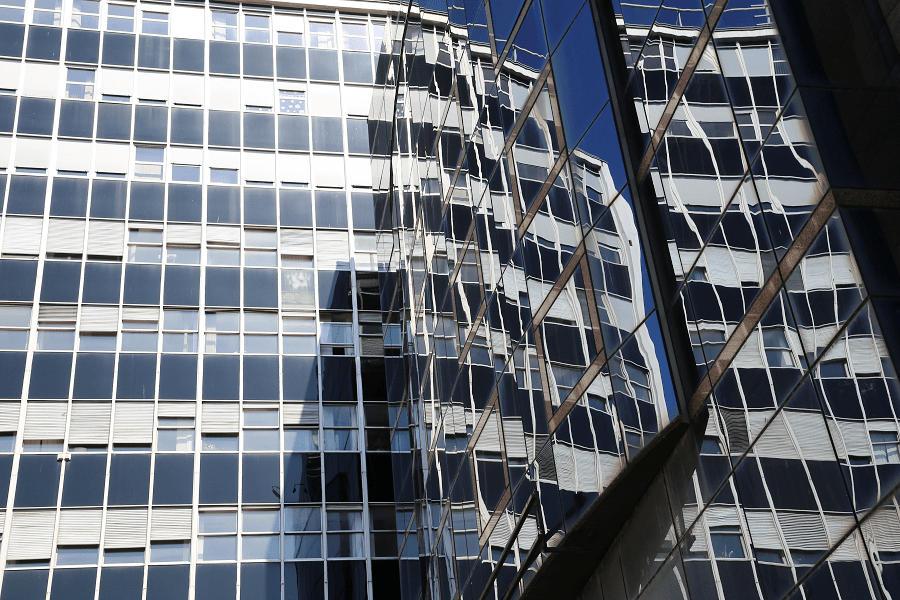Belgrade (Serbian: Београд / Beograd, lit. ’White City’) is the capital and largest city in Serbia (Europe, but not part of the European Union).
It is located at the confluence of the Sava and Danube rivers and the crossroads of the Pannonian Plain and the Balkan Peninsula. Nearly 1.7 million people live within the administrative limits of the City of Belgrade. It is the third largest of all cities on the Danube river.
Being Serbia’s primate city, Belgrade has special administrative status within Serbia. It is the seat of the central government, administrative bodies, and government ministries, as well as home of almost all of the largest Serbian companies, media, and scientific institutions. Belgrade is classified as a Beta-Global City.
Tourism in Serbia is officially recognized as a primary area for economic and social growth. Tourism in Serbia employs some 75,000 people, about 3% of the country’s workforce. In recent years the number of tourists is increasing, especially foreign ones for about hundred thousand arrivals more each year. In 2019, tourism generated an income of nearly $1.698 billion, hosting 3 million and seven hundred thousand tourists, half of whom were foreigners.
Chinese tourists were the most numerous foreign visitors, followed by tourists from Bosnia and Herzegovina, Bulgaria, Turkey, and Germany. Major destinations for foreign tourists are Belgrade and Novi Sad, while domestic tourists prefer spas and mountain resorts. Eco-friendly and sustainable tourism has also become very popular among domestic tourists, with many young people visiting various nature reserves and parks in the western and southern part of the country.
Serbia is also known for gastronomic tourism, in both urban and rural areas of the country, with Belgrade being the central meeting point with over 1800 restaurants, coffee shops, bars and nightlife venues.
Tourism and main attractions
There are almost 300 cultural monuments within the territory of Belgrade, among which 57 are of utmost and significant importance for the culture of Serbia and Belgrade. Three spatial cultural-historical ensembles (Knez Mihajlova Street, Topčider and area around Dositej’s Boarding School and the archaeological finds Belo Brdo in Vinča have been proclaimed the values of extraordinary importance, and three spatial ensembles (Gročanski bazaar – Bulevar Oslobođenja, Kosančićev Venac, old nucleus of Zemun) and two remarkable locations (Bojčin’s Forest and Commemorative Cemetery of Belgrade Liberators 1806) of great importance for the culture. The institutions for protection are responsible for some twenty archaeological finds throughout the City area.
As for the facilities proclaimed natural treasures, the ones of major importance are: Belgrade Fortress, St. Mark’s Church, Saint Archangel Michael Cathedral Church, Thumb of the Unknown Soldier on Avala, Monument at the death spot of despot Stefan Lazarević (Crkvine near Mladenovac), Zemun district, Cemetery of Belgrade Liberators, late Roman Tomb in Brestovik, Log-built church in Vranić, Birth Home of Voivode Stepa Stepanović, Palace of the Duchess Ljubica, Captain Miša’s Edifice.
The beauty of Belgrade squares and public gardens in ten town municipalities is supplemented by 192 monuments and 237 sculptures. About 70 monuments and works of sculpture are located in the outlaying municipalities.
In the inner area of the City of Belgrade there are over 5,500 streets, 16 plazas and 32 squares. The oldest streets that have retained their original routes are: Vase Čarapića, Kralja Petra, Cara Dušana, Jevrejska, Narodnog fronta, Gavrila Principa, and Karađorđeva Streets. The development of the street network started in 1867, after the Turks had departed, when the regulatory plan of Belgrade was adopted, which had been drawn up by engineer Emilijan Josimović. In the territories of the 10 City municipalities, the oldest is the Student Square, and the most famous one is the Republic Square.
The area of the City of Belgrade preserves 37 protected natural treasures, out of which the majority accounts for long-living and rare trees. Among them is the Quercus robur Melnice in the Sopot municipality village Nemenikuće, over 230 years old. There also is the group of nine oak trees with the Jazić’s hut in Obrenovac, about 180 years old, followed by plane tree planted at the time of building of Palace of the Duke Miloš Obrenović in 1834 and a century-old cedar tree planted by Josif Pančić in Tolstojeva Street in the municipality of Savski venac.
Among the protected natural values there also are Banjica’s Forest, the nestling spot of over 70 species of birds, “Maša’s Mine” near Summer Stage in Topčider (geological set layer from the upper Cretaous Age), “Myocene’s sand-shelf” at Tašmajdan and “Sea Neogene’s sandbank” underneath the “Liberator” Monument on Kalemegdan, representing the remnants of the Mediterranean basin of Pannonian Sea.
Museums
The most prominent museum in Belgrade is the National Museum, founded in 1844 and reconstructed from 2003 until June 2018. The museum houses a collection of more than 400,000 exhibits (over 5600 paintings and 8400 drawings and prints, including many foreign masters like Bosch, Juan de Flandes, Titian, Tintoretto, Rubens, Van Dyck, Cézanne, G.B. Tiepolo, Renoir, Monet, Lautrec, Matisse, Picasso, Gauguin, Chagall, Van Gogh, Mondrian etc.) and also the famous Miroslav’s Gospel.
The Ethnographic Museum, established in 1901, contains more than 150,000 items showcasing the rural and urban culture of the Balkans, particularly the countries of former Yugoslavia.
The Museum of Contemporary Art was the first contemporary art museum in Yugoslavia and one of the first museums of this type in the world. Following its foundation in 1965, has amassed a collection of more than 8,000 works from art produced across the former Yugoslavia. The museum was closed in 2007, but has since been reopened in 2017 to focus on the modern as well as on the Yugoslav art scenes.
The Military Museum, established in 1878 in Kalemegdan, houses a wide range of more than 25,000 military objects dating from the prehistoric to the medieval to the modern eras. Notable items include Turkish and oriental arms, national banners, and Yugoslav Partisan regalia.
The Museum of Aviation in Belgrade located near Belgrade Nikola Tesla Airport has more than 200 aircraft, of which about 50 are on display, and a few of which are the only surviving examples of their type, such as the Fiat G.50. This museum also displays parts of shot down US and NATO aircraft, such as the F-117 and F-16.
The Nikola Tesla Museum, founded in 1952, preserves the personal items of Nikola Tesla, the inventor after whom the Tesla unit was named. It holds around 160,000 original documents and around 5,700 personal other items including his urn.
Belgrade also houses the Museum of African Art, founded in 1977, which has a large collection of art from West Africa.
The Automobile Museum of Bratislav Petkovic (Братислав Петковић) Collection, is the newest in a series of technical museums in Belgrade. The Museum was founded by the Assembly of the City of Belgrade and Bratislav Petkovic, the collector and owner of a collection comprising historically valuable cars and archive material on the domestic history of motoring.
With around 95,000 copies of national and international films, the Yugoslav Film Archive is the largest in the region and among the 10 largest archives in the world. The institution also operates the Museum of Yugoslav Film Archive, with movie theatre and exhibition hall.
Culture
Belgrade is the centre of culture and art of Serbia. It is Belgrade where the most notable artists create, where over 11.000 theatrical performances, exhibitions, concerts, performance events, and other artistic programs are presented and where prominent authors in the world of art are hosted.
Belgrade is the centre of the highest state and national institutions of culture and art: Serbian Academy of Arts and Sciences, the National Library of Serbia, the National Museum, the National Theatre and the University of Arts.
The City of Belgrade is the founder of 30 cultural institutions (12 theatres, 8 institutions for protection of cultural values, 4 libraries, 6 cultural centers and galleries) and at the same time contribute in the implementation of schedules and scheduled attractions of institutions and artistic associations.
The City of Belgrade is the founder of 11 cultural events (FEST, BITEF, BEMUS, BELEF, International Competition of Music Youth, Festival of Documentary and Short film, October Salon, Joy of Europe, Belgrade Book Fair, Sopot Film Festival, Belgrade Jazz Festival), and also the supporter of 69 events in the field of culture performed in Belgrade.The Secretariat of Culture within the City Administration is in charge of culture and art.
The city was one of the main centres of the Yugoslav new wave in the 1980s: VIS Idoli, Ekatarina Velika, Šarlo Akrobata and Električni Orgazam were all from Belgrade. Other notable Belgrade rock acts include Riblja Čorba, Bajaga i Instruktori and Partibrejkers.
Today, it is the centre of the Serbian hip hop scene, with acts such as Beogradski Sindikat, Bad Copy, Škabo, Marčelo, and most of the Bassivity Music stable hailing from or living in the city.
Shopping
There are more then 1000 stores in Belgrade and more then 200 brands of clothes. Shopping in Belgrade offers interesting local and many attractive foreign brands. You can find alternative stile of brands, everything you need for good techno party in Belgrade.
Most luxury malls are Galerija Mall, Rajiceva Mall and the Usce Sopping Mall.
Winter sales start from October and last till late March. In the late September and early October, you will find Summer Sales all over the city. Same when it comes to the end of the winter. From the late February you will find spring editions, and start of the sales in Belgrade Shopping malls and stores.
Transport
Belgrade Nikola Tesla Airport or Belgrade Airport (IATA: BEG, ICAO: LYBE) is an international airport serving Belgrade and Serbia. It is the largest and busiest airport in Serbia, situated 18 km west of downtown Belgrade near the suburb of Surčin. It is operated by French conglomerate Vinci Airports and it is named after Serbian inventor Nikola Tesla (1856–1943).
The flag carrier and largest airline of Serbia, Air Serbia, uses Belgrade Nikola Tesla as their hub. It is also one of the operating bases for low-cost airline Wizz Air. The air taxi services Air Pink, Eagle Express and Prince Aviation also call the airport their home.
Airport two terminals have a combined area of 33,000 sqm, with Terminal 2 being larger of the two, adjacent to one another terminals are connected through a hallway. The airport has 66 check-in counters and 27 gates (of which 16 are equipped with jetways).
The Port of Belgrade (Serbian: Лука Београд) is a cargo and passenger port located on the Danube river. The port is located in the center of Belgrade, near Pančevo Bridge. It also manages the passenger terminal on the nearby Sava river. The port transfer capacity is three million tons per year and 10,000 TEUs. It also has 300,000 square meters of warehouses and 650,000 square meters of open-air storage areas. The most common load goods are salt, sugar, concrete iron, paper, pipes and artificial fertilizers.
The port was privatized in 2005, in a process which raised issues of corruption which have not yet been settled.
The high-speed rail that connects Belgrade with Novi Sad started its service at 19 March 2022. The extension towards Subotica and Budapest is under construction, and there are plans for southwards extension towards Niš and North Macedonia.
The city is placed along the Pan-European corridors X and VII. The motorway system provides for easy access to Novi Sad and Budapest to the north, Niš to the south, and Zagreb to the west. Expressway is also toward Pančevo and new Expressway construction toward Obrenovac (Montenegro) is scheduled for March 2017. Belgrade bypass is connecting the E70 and E75 motorways and is under construction.
Best restaurants
There are 14 Michelin list restaurants in Belgrade:
Enso, Mitropolita Petra 8, 3,900 – 6,900 RSD • Creative Cuisine
Homa, Žorža Klemansoa 19, 6,600 – 8,990 RSD • Creative Cuisine
JaM, Knez Miletina 25, 4,000 RSD • Modern Cuisine
Iva New Balkan Cuisine, Kneginje Ljubice 11, 2,100 RSD • Modern Cuisine
Mezestoran Dvorište, Svetogorska 46, 2,800 RSD • Mediterranean Cuisine
The Square, Studentski Trg 9, 7,800 RSD • Modern Cuisine
Comunale Caffè e Cucina, Karađorđeva 2-4, Beton Hala, 4,400 RSD • Italian Cuisine
Ebisu, Studentski trg 9hh, 7,000 RSD • Japanese Cuisine
Legat 1903, Jasenička 7, 5,900 RSD • Modern Cuisine
Langouste, Kosančićev Venac 29, 6,700 – 9,900 RSD • Modern Cuisine
Salon 1905, Karađorđeva 48, 7,200 – 14,000 RSD • Modern Cuisine
Magellan, Jurija Gagarina 14ž, 5,400 RSD • Modern Cuisine
Gušti mora, Ulica Radnička 27, 5,000 RSD • Seafood
Bela Reka, Tošin Bunar 179, 4,000 RSD • Traditional Cuisine
Visa Requirements
On October 30, 2014, the Government of the Republic of Serbia adopted the Decision on visa free entry to the Republic of Serbia for holders of foreign national passports having a valid Schengen, UK and other Member States’ visa, or visa of the United States of America, and for holders of foreign national passports having residence permit in the countries of the Schengen area, EU or the United States of America.
On basis of this decision, the above-mentioned categories of foreign nationals may, without prior visa application, enter, transit and stay in the Republic of Serbia up to 90 days during a six-month period, and within validity of said visas or residence permits.
There is a possibility for foreign nationals to enter the Republic of Serbia with two passports e.g. expired national passport with valid visa or residence permit and valid national passport without valid visa or residence permit.
Foreign nationals, holders of a residence permit in the form of a separate card (not a sticker affixed to their passport), must present their valid passport upon entering the territory of the Republic of Serbia.
Visa applications should be submitted to the Embassy or Consulate General of the Republic of Serbia abroad.
Currency
The dinar (Serbian Cyrillic: динар, code: RSD) is the official currency of Serbia. One dinar is subdivided into 100 para. The dinar was first used in Serbia in medieval times, its earliest use dating back to 1214.
As for the August 2022: 1.00 Euro = 117.30447 Serbian Dinars
Shortest distances to the main European cities
From Paris: 18 hr 58 min (1,854 km) via A4
From Madrid: 27 hr (2,587 km) via E70
From Andorra: 21 hr 1 min (2,009 km) via E70
From Monaco: 13 hr 39 min (1,310 km) via E70
From Istanbul: 11 hr 41 min (952 km) via Avrupa Otoyolu/O-3
From Moscow: 27 hr (2,245 km) via E30/M1
From Bern: 14 hr 18 min (1,364 km) via A4 and E70
Main information
Area: 359 km²
Coordinates: 44°49′04″N 20°27′25″E
Population: 1,166,763
Languages: Serbian
Time: Central European UTC +1 (summer +2)
Postal code: 11000
Area code: +381(0)11
ISO 3166 code: RS-00
Vehicle registration: BG
See here Pyrenees travel guide
See here France travel guide
See here Spain travel guide




